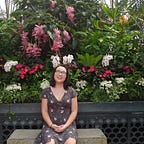Art Analysis #3
Die Orden der Nacht, Anselm Kiefer, 1996 and Self-Portrait, Morris Graves, 1933
In Anselm Kiefer’s Die Orden der Nacht (The Orders of the Night) and Morris Graves’s Self-Portrait, both artist’s try to communicate how they view themselves through their different uses of medium, color, and form.
Kiefer decided to include scenery within his self portrait, Die Orden der Nacht (The Orders of the Night). It shows a scene with black sunflowers stretching up to the sky and retreating into the background, while a figure lies on the ground with eyes closed. There is some amount of symbolism in the placement of the figure, between the heavens and the earth. Graves’s Self-Portrait is more akin to traditional portraits where there someone’s face and upper body is shown against a solid background. In his self portrait, there are no objects around him to give context as to where he is in the world.
The mediums these two artists decide to use produced wildly different effects. Kiefer used acrylic, emulsion, and shellac to cake paint onto his canvas, which has caused it to grow outwards. This heavy application of material caused cracks to form, as well as jagged outcroppings of paint. Comparatively, Graves used very little oil paint in his painting, as you can see the canvas showing through in many places. He used the canvas as a medium brown wherever it was left exposed.
Kiefer and Graves color choices both included brown, but Kiefer used yellow toned browns, creams, greys, and black. Meanwhile, Graves used red toned browns, creams, and reds. Kiefer’s colors evoke a feeling of death, and heaviness, even with the amount of light cream colors. Graves mainly uses red toned browns and muted reds. However, around the neck, he uses a bright red color, and around the face he uses a light cream. This is similar to irradiation seen in Seurat’s work. The red emphasizes the muted colors within the neck, while the cream emphasizes the darkness of the face and creates a halo effect around the face.
The forms used within each painting are different, but within these forms, one can draw out motifs that connect these two paintings. The forms shown in Kiefer’s self portrait are aggressively painted, making them jagged, sharp, and pointed. It is difficult to clearly make out the forms that are painted because of this way of painting. In Graves’s self portrait, the forms are made with repeating curves. This includes the edges of the figure, as well as the shadows within. These shadows are not blended outwards, creating a line. This transition is only helped by the similarity of the colors, not the way in which it is painted. One similarity between these two paintings is the emphasis of verticality. In Kiefer’s self portrait, the sunflowers stalks create vertical lines that cover almost the entire height of the canvas. This is contrasted with the horizontal figure, lying on the ground. In Graves’s self portrait, the neck is abnormally long, emphasizing the verticality and height because of the noticeable abnormality.
Through the many differences, the artist’s goals were the same. They both wished to express who they were through their artwork.
